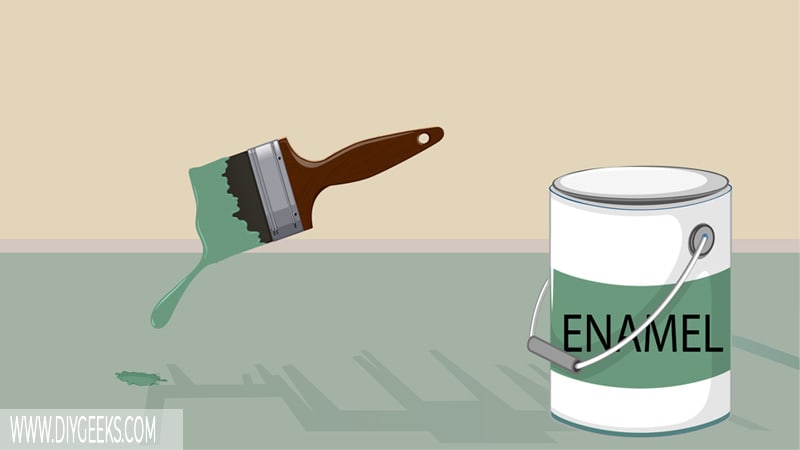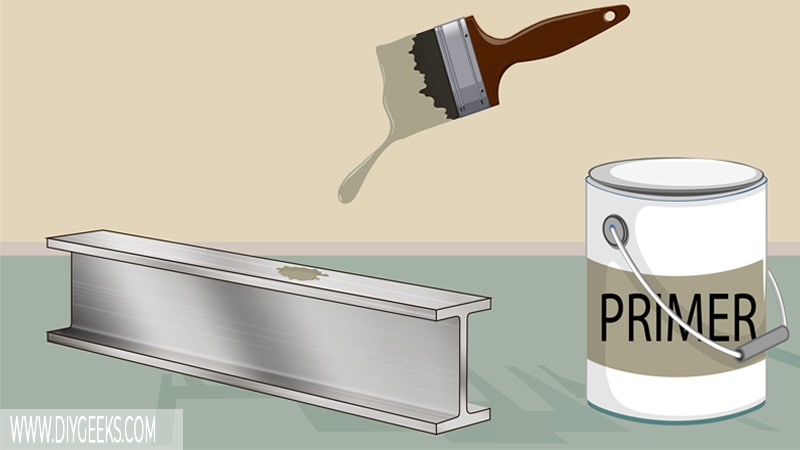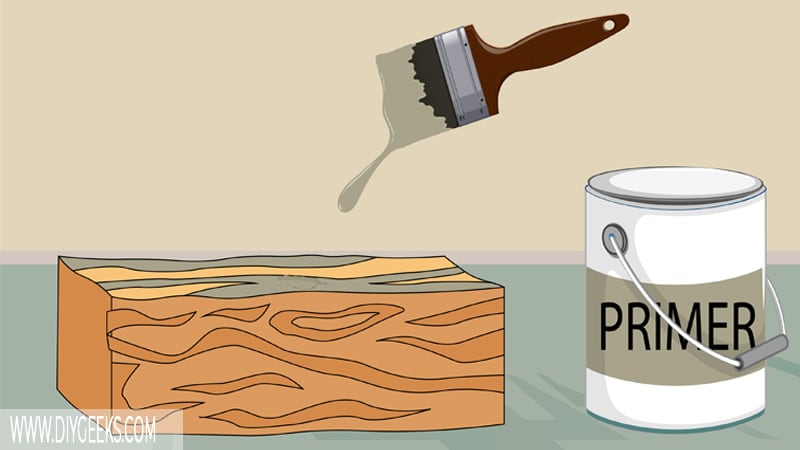Enamel paint doesn’t need a primer coating for porous, clean, and bare surfaces such as wood. However, enamel paint needs a primer coating for non-porous, wet, or surfaces with imperfections.
The purpose of the primer is to cover the surface imperfections and provide a smooth base coat for the paint to stick to.
Can You Apply Enamel Paint Without a Primer?

You can apply enamel paint without a primer because the paint has impressive adhesive qualities and sticks to most surfaces. However, a primer coating will help the paint adhere better and help produce a smooth finish.
Enamel paint has good adhesive qualities, a thick flow, and offers (minimal) protection and a colorful finish to surfaces. The paint forms a glossy finish that repels moisture (to a degree). So, applying a primer coat underneath enamel paint for smooth and clean surfaces is optional.
When To Apply Primer Before Enamel Paint?
You must apply a primer coating before enamel paint if the surface to be painted has imperfections, bumps, holes, or is wet. The primer will cover or fill the imperfections and holes and create a smooth and even (flat) layer for the paint to stick to.
You must apply a stain-blocking primer if the surface is wet as moisture will prevent the paint from sticking directly and might cause it to peel off. A stain-blocking primer will block the moisture from reaching the paint coating.
You must apply a primer coating before enamel for non-porous surfaces, such as plastic or glass, or for sealed surfaces.
Non-porous surfaces don’t have pores so the paint can’t penetrate and stick. You must apply a primer to the non-porous surface and then apply a paint coating over it. Primers are formulated with extra binders that improve their bonding quality.
Sealed surfaces are glossy and moisture-resistant so paint can’t stick over them. Since primers have extra binders they can stick over a sealed surface and provide a layer for paint to stick to. However, it’s better to remove the sealer coating first.
Which Paint Primer To Use for Enamel Paint?
The paint primers to use for enamel paint are listed below.
- Alkyd Primer.
- Acrylic Primer.
- Shellac Primer.
1. Alkyd Primer
Alkyd primer is oil-based with stain-blocking, and moisture and UV-resistant qualities that prevent wet surfaces from affecting the paint adhesion. Use alkyd primer for non-porous surfaces, such as plastic.
2. Acrylic Primer
Acrylic primer is water-based and is known to dry faster and adhere well. Use an acrylic primer for water-based enamel paint on drywall, plaster, and wood.
This primer isn’t moisture-resistant so don’t apply it over wet surfaces.
3. Shellac Primer
Shellac primer dries fast, has good coverage, and provides a smooth base for paints to adhere to. Use shellac-primer for wet surfaces or to cover smoke damage on walls as it’s stain-blocking.
Can You Apply Enamel Paint Without Primer in Different Surfaces?
Metal Surfaces

You can’t apply enamel paint on metal surfaces without a primer. Metal surfaces are non-porous, so paint won’t adhere well over them without a base coat.
Apply stain-blocking primer for rusted, wet, or damaged metal surfaces. If you don’t, the rust and moisture will bleed through the enamel paint and change its color or cause it to peel off.
The stain-blocking shellac-based primer will prevent moisture and rust from affecting the enamel paint finish and will fill the holes and imperfections on the metal surface.
However, if the metal surface is severely damaged, you must repair it first. Avoid using water-based primers for metal surfaces.
Related Read: How To Apply Enamel Over Latex Paint?
Plastic Surfaces
You can’t apply enamel paint on plastic surfaces without a primer. Plastic surfaces are non-porous and slick, paint won’t stick over them without a base coat. The coating will peel off or not stick at all if you apply enamel paint directly over bare plastic.
Primers are formulated with extra binders to improve their adhesion qualities so they stick over non-porous surfaces.
To apply enamel paint on plastic, sand the surface, apply one coat of primer, and then apply it. Sanding will produce a ridged layer over the surface to help the basecoat stick better. If you apply it without a primer, the paint will chip and slide off the surface.
Wood Surfaces

You can apply enamel paint on wood surfaces without a primer, but the wood must be clean, dry, and smooth.
If the wooden surface is dirty, dusted, or has imperfections and holes, you must apply a primer coating before enamel paint. The primer coating will cover the imperfections and fill the holes on the surface.
For wet wooden surfaces, apply stain-blocking primer to prevent moisture from affecting the paint finish.
If you don’t want to use a basecoat, you can just sand the wooden surface before painting it. Sanding will remove the imperfections and bumps from the surface.
To paint wood with enamel, you can use water or oil-based primers.


